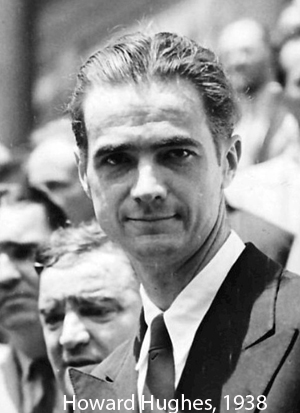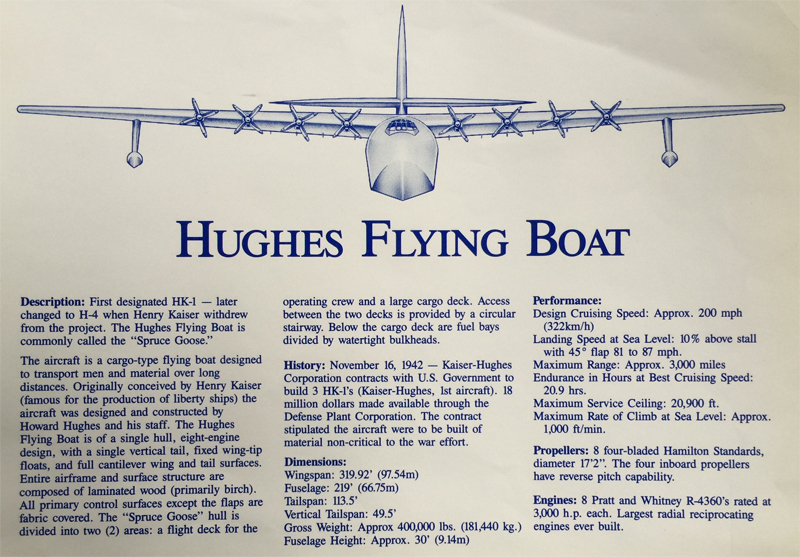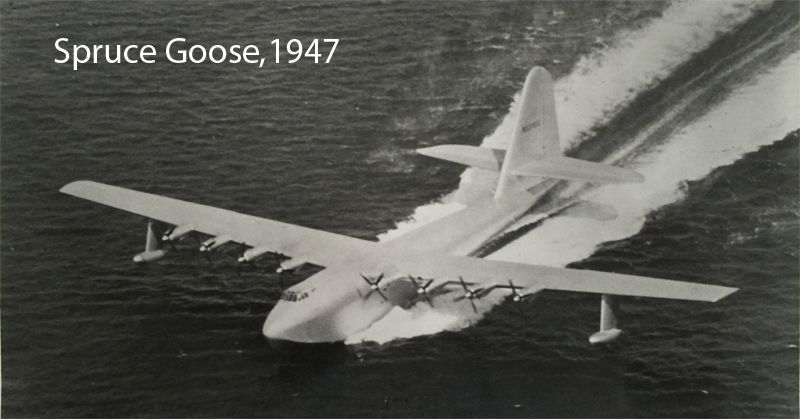The Spruce Goose and US Decline
 First published as 'Soaring flights of fancy’ in Design Week, 14 June 1991
First published as 'Soaring flights of fancy’ in Design Week, 14 June 1991If America had shown more respect for the art of product design, maybe it wouldn’t be losing out so much to competing world powers
Where are America and American design going in the world? It would be nice to think that the recent cuts in US armed forces in Europe would free up dollars for George Bush to spend on things like design. But as Defence Secretary Dick Cheney recently made clear, to save money on the military later, one must lay out a lot on restructuring it now. Thus, even though design is now all the rage at Harvard and in the pages of Business Week, a design-friendly peace dividend looks improbable.
Indeed, the growth of US manufacturing and security tensions with Japan looks set to force Bush to lavish more funds on weapons technology, not design. These days, Japan makes a lot of the chips that go into American arms, and Uncle Sam is getting increasingly nervous about that.
This rather gloomy analysis puts me more on the side of the ‘declinists’ than the ‘revivalists’ in America’s debate about its prospects. True, I don’t believe that a government-imposed, design-based industrial policy is the right alternative to the ‘imperial overstretch’ castigated by Paul Kennedy in his Rise and Fall Of The Great Powers (1987). But I cannot see America regaining the clout that it is so clearly beginning to lose to Tokyo and Bonn. It will need to invest much more on product design, in order to repel competitors. But budgets for design will never get near those devoted to arms.
For evidence, go to Los Angeles, epicentre of America’s military industrial complex and of its historic animosity to Japan. There you can walk around a plane that, having a wingspan longer than an American football field, is the widest on earth.
With an obscenely large tail and a gracefully sculpted nose, the Spruce Goose stands as testimony to an era in which weapons design was dignified by something more elegaic than the chip-laden, opaque aggression of Stealth bombers. More important, it signals the transience of untrammeled US world power.
 Five months after the Battle of Midway in June 1942, the White House ordered three Gooses at the heroic cost of $18m. They were each to take 750 combat-ready GIs, or two 30-ton Sherman tanks, 3000 miles in 21 hours. Since materials not vital to the war effort had to be used, the final confections were made of laminated birch, spruce, fabrics, and special glues. But in 1945 Washington cancelled its order – only for the plane’s maker, Hollywood millionaire producer Howard Hughes, to persuade Roosevelt to let him press on with one model.
Five months after the Battle of Midway in June 1942, the White House ordered three Gooses at the heroic cost of $18m. They were each to take 750 combat-ready GIs, or two 30-ton Sherman tanks, 3000 miles in 21 hours. Since materials not vital to the war effort had to be used, the final confections were made of laminated birch, spruce, fabrics, and special glues. But in 1945 Washington cancelled its order – only for the plane’s maker, Hollywood millionaire producer Howard Hughes, to persuade Roosevelt to let him press on with one model.
Then, shortly after Harry Truman opened the Cold War in the spring of 1947, Hughes was hauled up in front of a Senate inquiry. The charge: plying the Pentagon and FDR’s son with bribes, booze and broads in exchange for fabulous profits on the Goose.
Saying he’d go into exile if the plane didn’t fly, Hughes stalked out of the hearings. Then, on a November Sunday, he despatched his critics by unexpectedly turning the Goose’s first trial taxi across Long Beach harbour into an airborne hop. Height: 70 feet. Distance: one mile. Further flying history: none.
I don’t like war, but I do love the Goose. For years it was modified, readied for flight tests by Hughes, but kept in a secret temperature-controlled hangar because its maker failed to don the flying jacket for which he was famous. Today, Disney exhibits it in the largest freestanding geodesic dome in the world, surrounded by vintage cars and documentary films. I recommend a visit.
In its short-lived and overblown glory, the Spruce Goose sums up how fragile – and how unfounded on design – American hegemony has been. Throughout much of the nineteenth century, Britain needed design to be the workshop of the world. America, by contrast, has ruled by being what FDR called ‘the arsenal of democracy’. Only with the Goose and a few other bits of matériel (Studebaker trucks, for example) did design count much for this kind of martial power. And, within two years of the Goose’s flight, America lost both China and its monopoly of nuclear weapons.
Will the Goose now be disinterred, so as to help the leaner but more mobile US Army shore up America in the post-Gulf era? I doubt it. The Goose is grounded. There will be no second flight.

@jameswoudhuysen I use my bicycle every day. Exercise and access to shopping without any parking meters and all that fuzz. But alfa-cyclists are the worst. They are competing at 40 mph and always acting rudely to get where they are going.
A PRO-CAR CYCLIST WRITES: 12-1pm tomorrow on #R4, will be talking bikes, cars, pedestrians, public transport – and #JeremyVine
Stimulating piece on the #CrisisOfCustomerService by clever @ClaerB @FT.
All that Clinton-era #CustomerExperience guff was always for the birds - certainly compared with, er, price.
The new thang? Often there is NO service - and thus no #CX!
Articles grouped by Tag
Bookmarks
Innovators I like

Robert Furchgott – discovered that nitric oxide transmits signals within the human body

Barry Marshall – showed that the bacterium Helicobacter pylori is the cause of most peptic ulcers, reversing decades of medical doctrine holding that ulcers were caused by stress, spicy foods, and too much acid

N Joseph Woodland – co-inventor of the barcode

Jocelyn Bell Burnell – she discovered the first radio pulsars

John Tyndall – the man who worked out why the sky was blue

Rosalind Franklin co-discovered the structure of DNA, with Crick and Watson

Rosalyn Sussman Yallow – development of radioimmunoassay (RIA), a method of quantifying minute amounts of biological substances in the body

Jonas Salk – discovery and development of the first successful polio vaccine

John Waterlow – discovered that lack of body potassium causes altitude sickness. First experiment: on himself

Werner Forssmann – the first man to insert a catheter into a human heart: his own

Bruce Bayer – scientist with Kodak whose invention of a colour filter array enabled digital imaging sensors to capture colour

Yuri Gagarin – first man in space. My piece of fandom: http://www.spiked-online.com/newsite/article/10421

Sir Godfrey Hounsfield – inventor, with Robert Ledley, of the CAT scanner

Martin Cooper – inventor of the mobile phone

George Devol – 'father of robotics’ who helped to revolutionise carmaking

Eugene Polley – TV remote controls

Thomas Tuohy – Windscale manager who doused the flames of the 1957 fire



0 comments